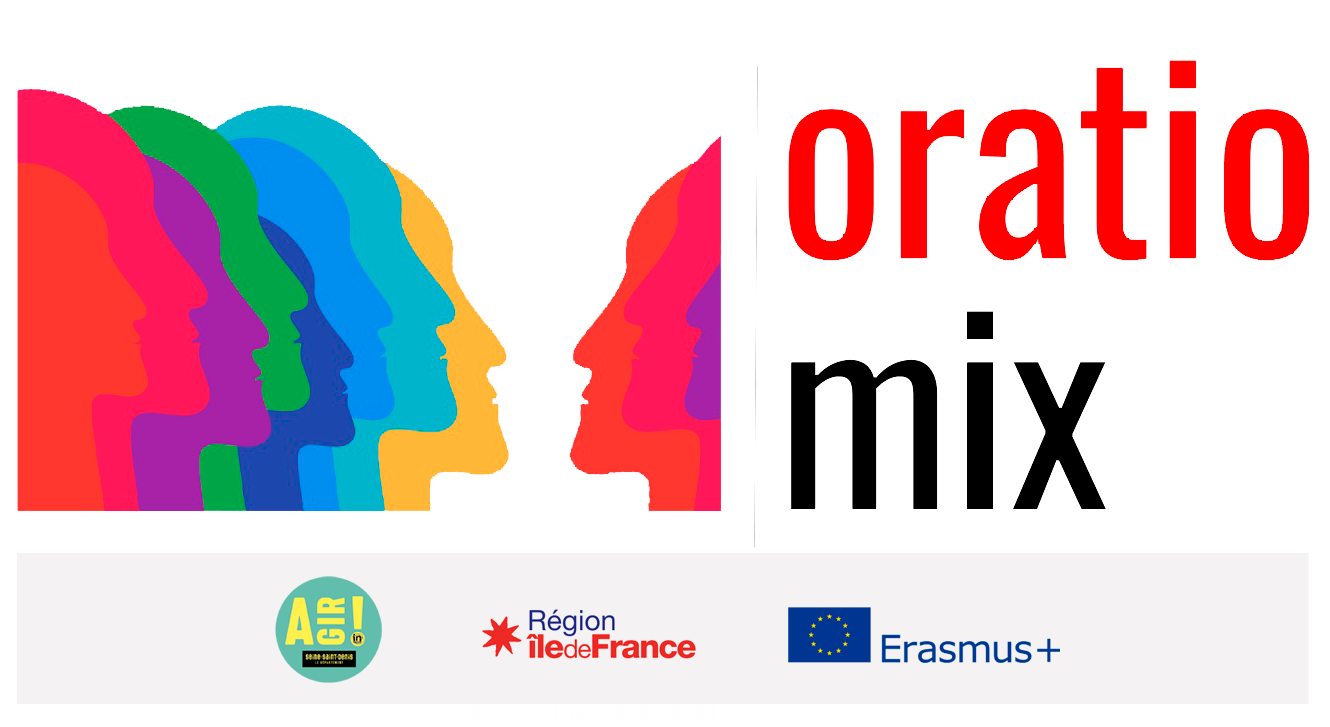Workshop 7 : Version 2 the adaptation
Implementation: what do we need?
– paper, felt-tip pens
– A workspace: the room provided must be large enough and arranged in such a way that it can accommodate all participants and allow freedom of movement, the workshop requiring physical commitment.
The participants
The methodology is aimed at primary and sixth grade students, aged between 9 and 13. Ideally, the group should not exceed 30 students.
Speaker
School teacher, educator, theatre teacher
Objectives of this workshop
Strengthen the capacity for individual and collective reflection around a text.
Reinforce the notions of listening, attention to others and debate.
Develop the ability to act as a group.
Time required
90-120 minutes
Implementation
The workshops use techniques of oral expression and debate around a theme related to a source text. They also put into practice, through body expression techniques, the questions theorized by students to allow a global understanding of the issues raised by the text.
Finality
At the end of the session, children will have:
Developed ability to work individually and in groups
Progressed towards acquiring communication skills
Strengthened their critical thinking by sharing and discussing symbolic themes present in their stories.
The practice of new techniques by students will improve their personal development and communication skills.
1. Start session
The clap
In a circle, the children pass a clap to their neighbor. e (one claps in his hands) while making the circle. For the clap to pass, students must look each other in the eye before clapping their hands!
2. Construction of the story
- As a first step, the animator.ice offers students to imagine and draw individually the six stages of the story selected on an A4 sheet divided into six boxes. In the first box, students draw the. a hero of the new version of their story. In the second, the transposition of the place. In the third, the same for the opponent. In the fourth, the adjuvant. In the fifth, the action. In the sixth, the end of the story can be totally different depending on the message the student wants to carry (sometimes unconsciously). The important thing is only to tell them that the hero can become a heroine (and vice versa), that the role of an animal can now be held by a human, that the story can take place elsewhere on the globe or in an imaginary place, can take place nowadays, that the opponent can take another form (a virus, a polluting agent, etc.). For the end, they decide on a happy ending or not, or even open. The facilitator must offer solid support and help students who would have the most difficulty engaging in their reflective and creative process.
- When the drawings are finished, students reform their working group (by story/legend) and exchange with each other on their drawings.
3.The vote
Each group will now have to determine the different elements that will constitute their common adaptation.
Students are invited to choose from the different proposals already present in the drawings of the members of their group. They will express their choices through a vote or deliberation: what will best suit each group, so in the same class it may be that some groups choose to vote while others more naturally manage to agree. The facilitator must be vigilant at this moment that each student succeeds in expressing his opinion in his group.
At the end of the sequence, each group will then have set his/her:
hero. s
Locations
Opponents
Friends
Stocks
settlement
5. End of the ritual
Clapping
The. a leader stands opposite the other members of the group in order to be seen by all. He/she positions his arms horizontally and will clap his hands above his head. The others must imitate him at his/her pace. Then, little by little, he.elle will accelerate until reaching applause.
